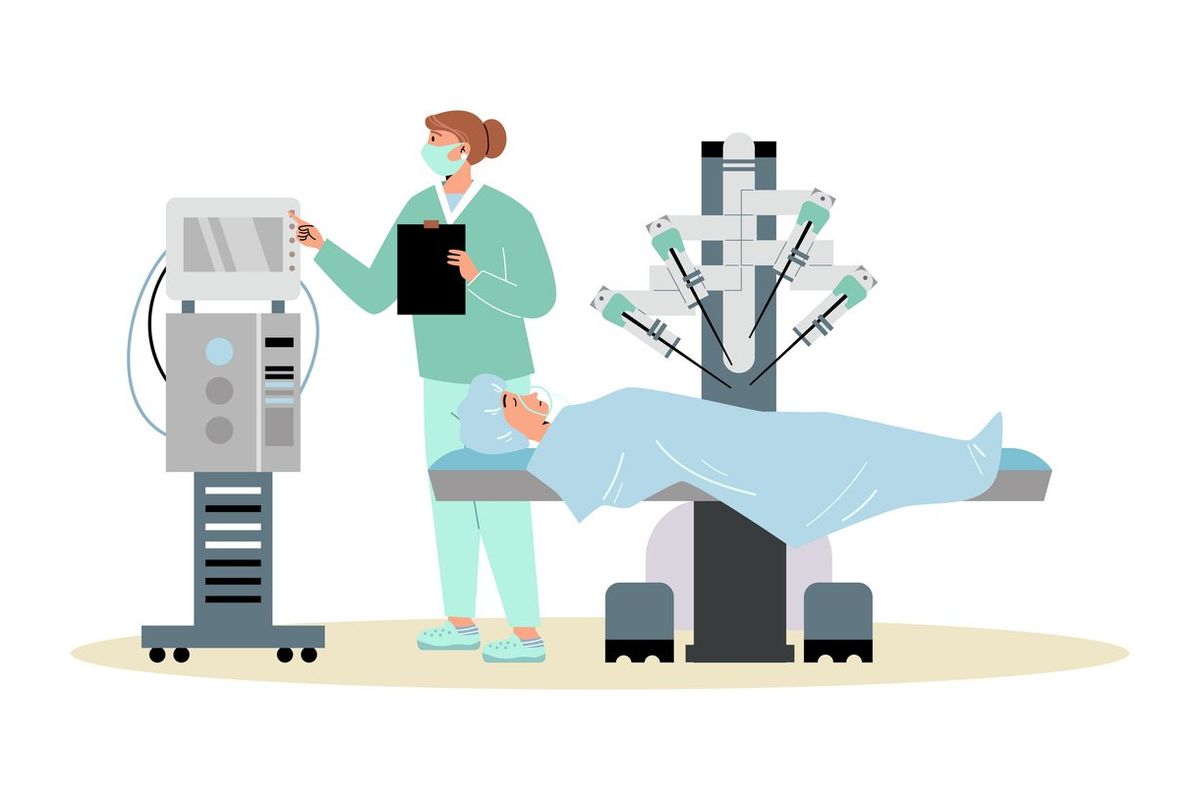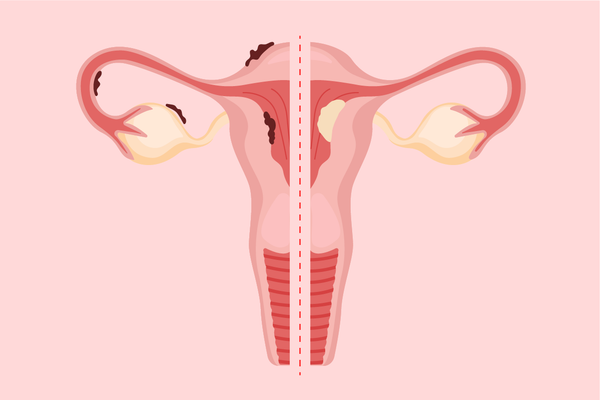About 1 in 4 surgeries in women in the United States involve obstetric-gynecologic (OB-GYN) procedures. That means you might find yourself needing to have one of these surgeries at some point in your life. But did you know some of them are done using robotics?
More than 876,000 robotic-assisted surgeries were performed in the U.S. in 2020. Here’s what happens during a robotic-assisted procedure and important facts you need to know about this type of OB-GYN surgery.
What is OB-GYN robotic-assisted surgery?
Gynecologic robotic surgery is a type of minimally invasive surgery (meaning the incisions, or surgical cuts, are much smaller) that focuses on female reproductive organs. Obstetric surgery focuses on pregnancy-related surgeries. Most robotic procedures involve thinner surgical tools and smaller incisions compared to traditional open surgery.
During robotic-assisted surgery, a specially trained surgeon sits several feet away from the patient at a computer console that offers a magnified, high-definition 3D view and hand controls. The surgeon uses the hand controls to move robotic arms that are above the operating table. An assistant stands by the bedside, where a video monitor shows 3D views of the surgical site. Assistants oversee the robotic arms that contain cameras and surgical tools needed for cutting, clamping and suturing (stitching up the incisions).
What are the types of OB-GYN robotic-assisted surgeries?
There are several different types of OB-GYN robotic-assisted surgeries. These include:
- Robotic hysterectomy (removal of the uterus): A hysterectomy using robotic surgery involves small cuts in the abdomen to separate the uterus from other tissues. The uterus is either removed through the vagina or through an incision in the abdomen.
- Robotic myomectomy (removal of uterine fibroids): Robot myomectomy can remove fibroids located in challenging areas.
- Robotic endometriosis surgery: Endometriosis is a condition where tissue inside the uterus grows on other parts of your body, such as on the ovaries, fallopian tubes or bladder. Doctors can use robotic-assisted surgery to remove these areas of tissue, called endometrial implants or lesions, when they cause severe pain and bleeding. Robotic-assisted surgery might even be more effective at removing deeper endometrial tissue than other types of surgeries.
- Robotic pelvic organ prolapse (POP) treatment: Prolapse happens when one of the pelvic organs, such as the bladder or uterus, slips out of place. This can be repaired with robotic surgery by lifting the organs back into place and securing them with a surgical mesh.
What are the benefits of robotic-assisted surgery?
Robotic gynecologic surgery might sound like something out of a sci-fi movie, but it’s not actually performed by robots. Your surgeon controls the robotic arms at all times.
There are many benefits to robotic gynecologic surgery.
- Using robotic arms allows surgeons to operate with more precision, and the surgery is often much quicker. So there is less chance of the surgeon getting hand tremors, which can happen when they hold surgical tools for a long time.
- Viewing the surgical site through the 3D monitor gives the surgeon a more detailed view than if they were performing traditional surgery.
- Patients who are operated on with robotic technology usually have less bleeding, less pain after the surgery, less chance of infection and smaller scars. Overall, people also tend to have shorter hospital stays and a shorter recovery period.
Read: Women Having Surgery Get Better Results if Their Surgeon Is a Woman >>
What are the risks of robotic-assisted surgery?
Robotic-assisted surgery is generally considered to be safe. But it can have similar risks as traditional surgery, including infection, bleeding, blood clots and complications with anesthesia.
There are some additional risks to having robotic surgery that are rare, but can happen. These can include user error, mechanical problems, electrical burns and nerve damage.
Not all surgeries can be done using robotics, and not all healthcare facilities have the technology. But if there are robots and trained surgeons available to you, make sure you ask your healthcare provider about the pros and cons of robotic-assisted surgery for your circumstances.
This educational resource was created with support from Intuitive.







